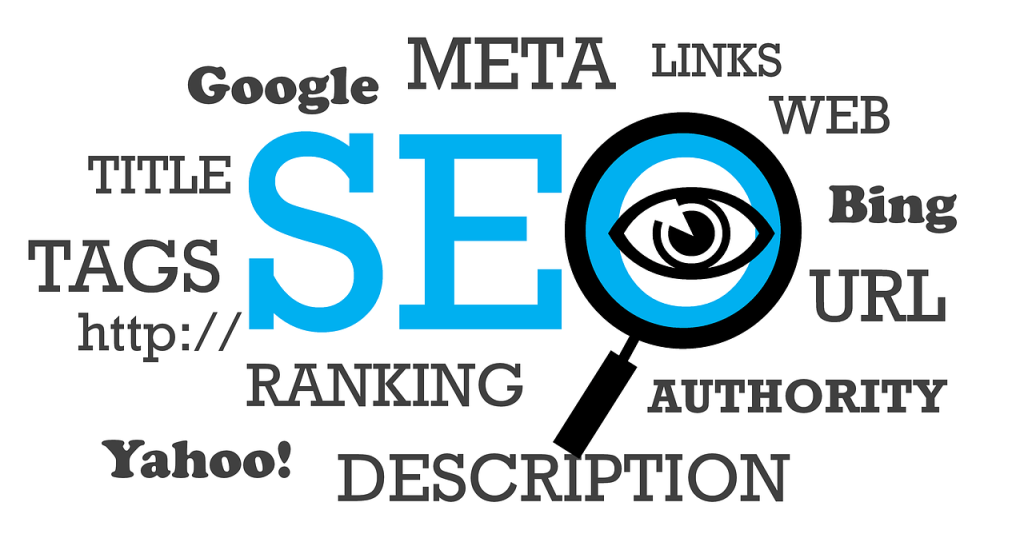Table of Contents
So, you’ve probably heard the term “meta tags” being thrown around in conversations about SEO, but what exactly are they and how do they actually impact your website’s search engine optimization?
Well, meta tags are snippets of text that provide information about your webpage to search engines and website visitors. They play a crucial role in helping search engines understand the content of your page and determine its relevance to specific search queries.
In other words, meta tags can greatly influence where your website ranks in search engine results and determine how easily users can find your site.
Understanding the importance of meta tags and how to optimize them can make a significant difference in your website’s visibility and organic traffic. So, let’s dive into the world of meta tags and explore their impact on SEO.
What Are Meta Tags
Definition of Meta Tags
Meta tags are snippets of code that provide information about a webpage to search engines and website browsers. They are placed in the HTML code of a webpage and are not visible to visitors on the site. Meta tags are used to provide metadata, which includes information about the page’s title, description, keywords, and other relevant information.
Types of Meta Tags
There are several types of meta tags that serve different purposes in optimizing a website for search engines. These include:
- Title Tags: The title tag is one of the most important meta tags for SEO. It specifies the title of a webpage and appears as the clickable link in search engine results.
- Meta Descriptions: Meta descriptions provide a concise summary of the content on a webpage. They appear beneath the title tag in search engine results and influence the click-through rate.
- Meta Keywords: Historically, meta keywords were used to indicate the relevant keywords for a webpage. However, their importance has diminished, and they are no longer a significant factor in SEO.
- Viewport Meta Tag: The viewport meta tag is essential for optimizing webpages for mobile devices. It helps in determining the layout and scaling of a webpage on different screen sizes.
- Canonical Tags: Canonical tags are used to address duplicate content issues. They indicate the preferred version of a webpage to search engines to avoid indexing multiple versions of the same content.
- Robots Meta Tag: The robots meta tag instructs search engine crawlers on how to interact with a webpage. It specifies whether to index, follow links, or exclude the page from search engine results.
- Open Graph Meta Tags: Open Graph meta tags are commonly used by social media platforms to determine how a webpage appears when shared on social networks. They control the title, description, and image shown in the shared post.
- Twitter Card Meta Tags: Twitter card meta tags function similarly to Open Graph meta tags but are specifically implemented for Twitter. They optimize the appearance of shared content on the Twitter platform.
- Schema Markup: Schema markup is a type of structured data that provides additional context to search engines about the content on a webpage. It helps search engines understand the information and display rich snippets in search results.
Purpose of Meta Tags
Meta tags play a crucial role in SEO by providing information to search engines and influencing how a webpage appears in search results. They help search engines understand the content, relevance, and user-friendliness of a webpage. By optimizing meta tags, website owners can enhance their website’s visibility, click-through rates, and overall search engine rankings.
Meta Tags and SEO
Importance of Meta Tags in SEO
Meta tags have long been a fundamental element of search engine optimization (SEO). They provide essential information to search engines, allowing them to categorize, understand, and display webpages accurately. Properly optimized meta tags improve a website’s visibility, as search engines use them to determine how relevant a webpage is to a user’s search query.
How Meta Tags Impact SEO Rankings
Meta tags directly impact SEO rankings by influencing how search engines interpret and present a webpage. The title tag, for instance, is a significant ranking factor, as search engines weigh it heavily in their algorithms. A compelling and keyword-rich title tag can improve a webpage’s visibility and potentially increase its organic traffic.
Meta descriptions, on the other hand, do not directly impact rankings but have a significant influence on click-through rates (CTRs). A well-crafted meta description that accurately summarizes the page’s content can entice users to click on the search result, leading to improved CTRs and indirectly impacting search rankings.
Common Mistakes with Meta Tags and SEO
While meta tags are essential for SEO, there are common mistakes that website owners make when implementing them. These mistakes can negatively impact a website’s search rankings and visibility. Some common mistakes include:
- Poorly written or generic meta tags: Generic or irrelevant meta tags that do not accurately represent the webpage’s content can harm search rankings. It is crucial to ensure that meta tags are unique, descriptive, and relevant to the page’s content.
- Keyword stuffing: Overloading meta tags with excessive keywords can do more harm than good. Search engines are becoming smarter at detecting keyword stuffing, and such practices can lead to penalties or lower rankings.
- Ignoring meta tag length limitations: Search engines have character limits for title tags and meta descriptions. Ignoring these limitations can result in truncated or incomplete meta tags, diminishing their effectiveness.
- Duplicate meta tags: Each webpage should have unique meta tags to provide accurate and relevant information to search engines. Duplicate meta tags can confuse search engines and negatively impact search rankings.
To maximize the benefits of meta tags and avoid these common mistakes, website owners should prioritize creating unique, descriptive, and well-optimized meta tags for each webpage on their site.

Types of Meta Tags
Title Tags
Definition
Title tags are HTML elements that define the title of a webpage. They are displayed as the clickable headline in search engine results pages and appear at the top of the browser window when the webpage is opened. Title tags are crucial for both search engine optimization and user experience.
Importance for SEO
Title tags play a significant role in SEO as they are one of the most crucial on-page ranking factors. Search engines consider the title tag when determining the relevancy of a webpage to a user’s search query. Well-optimized title tags that include relevant keywords can help improve a webpage’s search engine rankings.
Best Practices for Title Tags
To optimize title tags for SEO, consider the following best practices:
- Keep it concise and compelling: Title tags should ideally be between 50-60 characters to ensure they are displayed fully in search engine results. Craft a concise and compelling title that accurately represents the content of the webpage and entices users to click.
- Include relevant keywords: Incorporate relevant keywords naturally into the title tag to enhance its relevance to search queries. However, avoid keyword stuffing and ensure the title remains readable and grammatically correct.
- Maintain uniqueness: Each webpage should have a unique title tag that accurately reflects its content. Avoid using the same title tag for multiple pages, as this can confuse search engines and diminish the visibility of individual webpages.
By following these best practices, website owners can create well-optimized title tags that improve their search engine rankings and attract more clicks from users.
Meta Descriptions
Definition
Meta descriptions are HTML attributes that provide a brief summary of a webpage’s content. They typically appear beneath the title tag in search engine results and help users understand the relevance and context of the webpage.
Impact on Click-Through Rates
While meta descriptions do not directly impact search engine rankings, they have a significant influence on click-through rates (CTRs). A well-crafted and compelling meta description can entice users to click on a search result, even if it is not positioned at the top of the search results.
Best Practices for Meta Descriptions
To optimize meta descriptions for better CTRs, consider the following best practices:
- Keep it concise: Meta descriptions should ideally be between 150-160 characters to ensure they are fully displayed in search engine results. Craft a concise and compelling summary that accurately represents the content of the webpage and encourages users to click.
- Include relevant keywords: Incorporate relevant keywords naturally into the meta description to enhance its relevance to search queries. However, avoid excessive keyword usage and ensure the meta description remains readable and informative.
- Be unique for each page: Create unique meta descriptions for each webpage to provide accurate and contextually relevant information to users. Using duplicate meta descriptions can confuse search engines and diminish the visibility of individual webpages.
By following these best practices, website owners can create compelling and informative meta descriptions that improve the click-through rates of their webpages in search engine results.

Meta Keywords
Definition
Meta keywords are a type of meta tag that historically played a role in indicating the relevant keywords for a webpage. However, their importance has significantly diminished in modern SEO practices.
Historical Context
In the early days of SEO, meta keywords were widely used to inform search engines about the relevant keywords for a webpage. Webmasters would include a list of keywords within the meta keyword tag, hoping to improve their website’s search engine rankings for those specific keywords.
Irrelevance in Modern SEO
Over time, search engines have become more sophisticated in determining the relevance and context of webpages. Due to abuse and manipulation, meta keywords have lost their significance as a ranking factor. Search engines now primarily rely on the actual content of a webpage to understand its relevance to a user’s search query.
Including meta keywords in a webpage’s meta tags has little to no impact on search engine rankings. Instead, website owners should focus on creating high-quality, informative, and keyword-optimized content that genuinely provides value to users.
Viewport Meta Tag
Definition
The viewport meta tag is a crucial component of responsive web design. It helps in determining how a webpage is rendered and displayed on different devices and screen sizes.
Importance in Responsive Web Design
With the prevalence of mobile devices and varying screen sizes, it is essential for websites to be mobile-friendly and responsive. The viewport meta tag allows web designers and developers to control the initial width, scaling, and layout of a webpage on different devices.
By utilizing the viewport meta tag, webpages can adapt to the screen size of the device being used, providing an optimal viewing experience for users. This improves usability and ensures that the content is accessible and readable on various devices, including smartphones and tablets.
Best Practices for Viewport Meta Tag
To optimize the viewport meta tag, consider the following best practices:
- Use responsive design: Implement a responsive web design approach to ensure that your website adapts to different screen sizes. This allows the content to be easily readable and accessed on any device.
- Set the correct viewport width: Use the “width=device-width” property in the viewport meta tag to ensure that the webpage adjusts its width to the device’s screen size. This prevents the need for users to zoom in or scroll horizontally to view content.
- Define initial scale: Set the initial scale in the viewport meta tag to “1” to ensure that the webpage is displayed at the correct scale on different devices. This prevents pages from appearing too small or too large on certain screens.
By implementing these best practices, website owners can ensure that their webpages are optimized for different devices and provide an optimal user experience across various screen sizes.

Canonical Tags
Definition
Canonical tags (rel=”canonical”) are HTML elements used to address the issue of duplicate content. They indicate the preferred version of a webpage to search engines when multiple versions of the same content exist.
Importance in Managing Duplicate Content
Duplicate content occurs when similar or identical content is available on multiple webpages. This can happen due to various factors, such as session IDs, print versions, or dynamic URLs. Duplicate content can negatively impact search engine rankings and confuse search engines about which version of the content is the most relevant.
By implementing canonical tags, website owners can specify the preferred version of a webpage and consolidate the ranking signals to a single URL. This helps search engines understand which version of the content should be indexed and displayed in search results, mitigating the negative impact of duplicate content.
Implementation Guidelines for Canonical Tags
To effectively use canonical tags, consider the following implementation guidelines:
- Identify the original source: Determine the preferred version of a webpage that should be canonicalized. This is typically the version with the most comprehensive and relevant content.
- Add the canonical tag: In the head section of each version of the duplicate content, add a canonical tag that points to the preferred or original version. The canonical tag should include the URL of the preferred version as its value.
- Consistency is key: Ensure that the canonical tag is consistent across all versions of the duplicate content. This includes using the same canonical URL and ensuring that it points to the correct preferred version.
By following these guidelines, website owners can effectively use canonical tags to manage duplicate content and improve their website’s search engine rankings and visibility.
Robots Meta Tag
Definition
The robots meta tag (name=”robots”) is a crucial HTML element used to control the behavior of search engine crawlers or bots on a webpage. It instructs search engine crawlers on how to interact with a webpage, indicating whether to index the page, follow links, or exclude the page from search engine results.
Controlling Indexing and Crawling Behavior
The robots meta tag allows webmasters to have control over how their webpages are indexed and crawled by search engine bots. By specifying directives within the robots meta tag, webmasters can influence whether a webpage should be included in search engine results and how the associated links should be followed.
Different Directives of Robots Meta Tag
The robots meta tag can contain different directives or values to influence the behavior of search engine bots. Some common directives include:
- “INDEX”: This directive allows search engine crawlers to include the webpage in their index.
- “NOINDEX”: This directive instructs search engine bots not to include the webpage in their index, preventing it from appearing in search engine results.
- “FOLLOW”: This directive allows search engine bots to follow the links present on the webpage.
- “NOFOLLOW”: This directive instructs search engine bots not to follow the links present on the webpage.
Webmasters can combine these directives to control how search engine bots interact with their webpages. For example, they may want to prevent a webpage from being indexed but still allow the bots to follow the links on that page for crawling purposes.
By utilizing the robots meta tag effectively, webmasters can have granular control over how search engine crawlers interact with their webpages, ultimately improving their website’s visibility and search rankings.
Open Graph Meta Tags
Definition
Open Graph meta tags are HTML elements used to control how a webpage appears when shared on social media platforms like Facebook. They allow website owners to define how the shared link’s title, description, and image are displayed on social networks.
Enhancing Search Results with Schema Markup
By incorporating Open Graph meta tags into their webpages, website owners can optimize the appearance of their shared content. When a user shares a link from a webpage with Open Graph meta tags, the shared post on social media platforms will display the specified title, description, and image.
Open Graph meta tags provide consistency and control over the shared content’s appearance, ensuring that the intended information is conveyed effectively. By optimizing how their content is presented on social media, website owners can increase engagement, traffic, and visibility of their webpages.
Twitter Card Meta Tags
Definition
Similar to Open Graph meta tags, Twitter card meta tags are HTML elements used to control how a webpage’s content appears when shared on Twitter. They allow website owners to specify the title, description, and image displayed when a webpage link is shared on the Twitter platform.
Schema Markup
Definition
Schema markup, also known as structured data, is a standardized format used to provide additional context about the content on a webpage to search engines. It utilizes a specific vocabulary or syntax to help search engines understand the information better and provide more relevant search results.
Enhancing Search Results with Schema Markup
Implementing schema markup on a webpage provides additional information to search engines, enabling them to display rich snippets in search results. Rich snippets are enhanced search results that provide more detailed and visually appealing information about a webpage, such as star ratings, reviews, pricing, or event details.
By incorporating schema markup, website owners can enhance the search results for their webpages, making them more visually appealing and informative. This can improve click-through rates, increase organic traffic, and drive more targeted visitors to their websites.
Types of Schema Markup
Schema markup offers a wide range of categories and types for different types of content. Some common types of schema markup include:
- Article: Used for news articles and blog posts, providing information about the headline, author, date published, and article body.
- LocalBusiness: Used for local businesses, providing details such as name, address, phone number, and opening hours.
- Product: Used for e-commerce product pages, providing information about the product, including price, availability, and customer reviews.
- Event: Used for event listings, providing details such as event name, date, location, and ticket information.
These are just a few examples of the many types of schema markup available. By implementing schema markup specific to their content, website owners can enhance the search results and provide more valuable information to users.
In conclusion, meta tags play a crucial role in SEO by providing information to search engines and influencing how webpages appear in search results. Various types of meta tags, such as title tags, meta descriptions, and canonical tags, serve different purposes in optimizing a website for search engines. By understanding the importance of meta tags, avoiding common mistakes, and implementing best practices, website owners can improve their search engine rankings, increase visibility, and attract more organic traffic to their webpages. Additionally, incorporating Open Graph meta tags, Twitter card meta tags, and schema markup can optimize how webpages appear when shared on social media platforms, providing a consistent and appealing presentation of shared content. By utilizing these meta tags effectively, website owners can optimize their webpages for search engines and improve their overall online presence.














